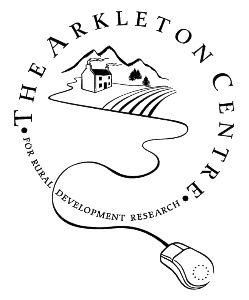 This page has been mothballed.
This page has been mothballed.
It is no longer being updated but we've left it here for reference.
Towards an Improved Rural Data Infrastructure for rural Scotland
(Funded for three years by the Scottish Executive Rural Affairs Department)
Data on rural land use, including non-farming uses, and on the wider rural economy and society are collected by a number of bodies for purposes relating to agriculture, land ownership and management, and development planning and control. Some of these are collected on a periodic basis as part of nationwide surveys, others are not.
 |
 |
 |
This project aims to investigate the reality of the rural data infrastructure within this context, bringing together researchers from geography, sociology, ecology and statistics. This is of course a broad-ranging remit, and therefore it is being approached through four modules, constituting two major strands. One seeks to identify the problems and opportunities associated with the responsibilities and perceptions of different data users and providers, and to make recommendations about how they could be addressed in the near to mid-term future. The other strand is contributing to empirical work on specific quantitative data integration problems using statistical (and possibly computational) methods linked with a Geographical Information Systems (GIS) environment.
- Objectives & Methods
- Contact Details for Partners
- Rural Change Scenarios
- Download-able
FactSheet
(an Adobe .pdf file - can be viewed and printed with Acrobat Reader)
(Commission No. MLU/598/97 3: 'Integrated system for analysing & reporting on the social, economic and environmental dimensions of rural land use change).
Using the increasingly popular term 'data infrastructure' implies that these varying data gathering initiatives are contributing towards an essential 'backbone' of data which is available, indeed essential, to serve varying research and policy requirements; and moreover, that such data are adequate, consistent and can be used together in appropriate ways to support multiple investigations.
These assumptions require greater study, at a time when the relatively certain institutional context for British farmers provided by the EU's Common Agricultural Policy (CAP) is undergoing reform, albeit gradually; when globalisation, technological change and major structural changes in the economy and in society are exerting pressures to modernise other rural and wider policies in ways which promote more competitive primary production and conservation, and community involvement and social inclusion and (e.g. the EU's Rural Development Regulation and Agenda 2000 Reforms of the Structural Funds; and when the re-structuring of government below the national level is exerting its effects.
The collective implications of these changes and developments for rural land use, agricultural adjustment, employment, economy and society will vary for differently situated rural areas. In relation to the requirements for policy-making, as well as for research into the poorly understood processes driving rural change, they pose many new questions about availability and adequacy of data from surveys which attempt to record or measure aspects these countryside characteristics.

